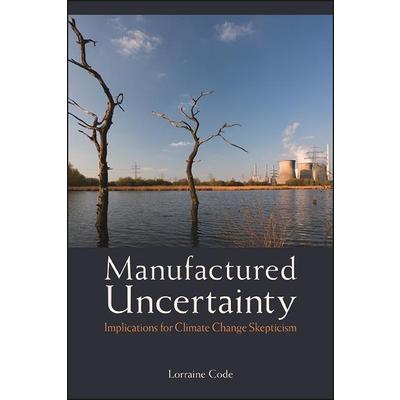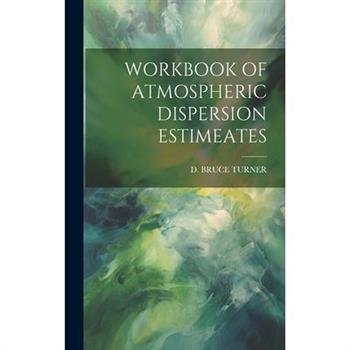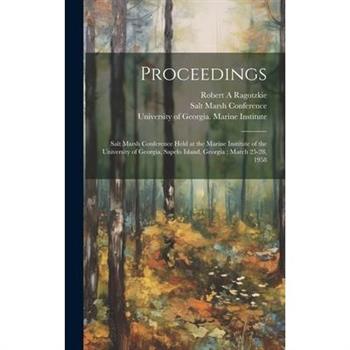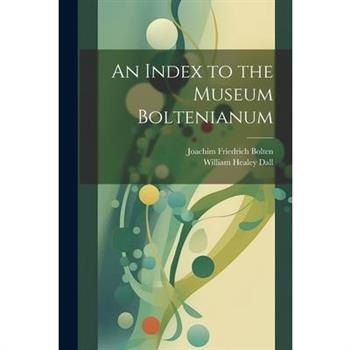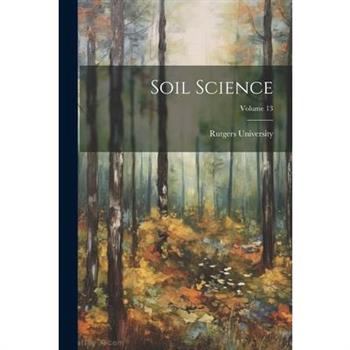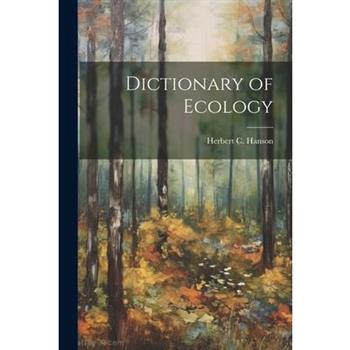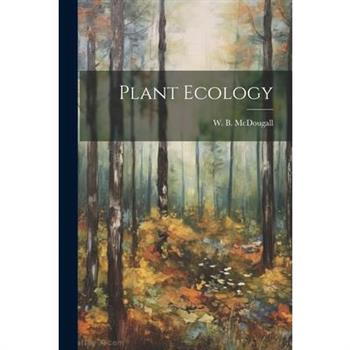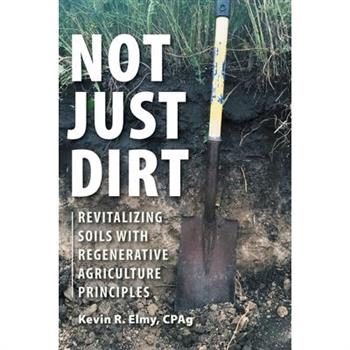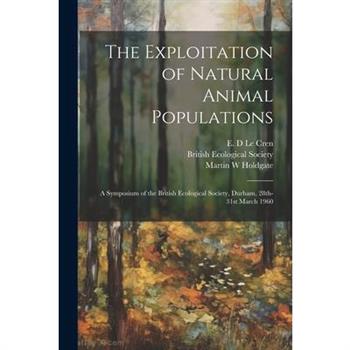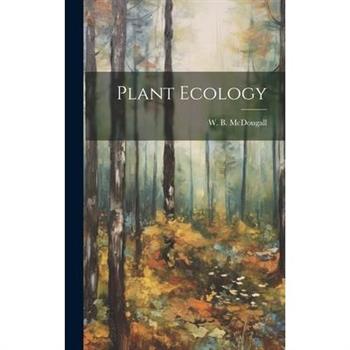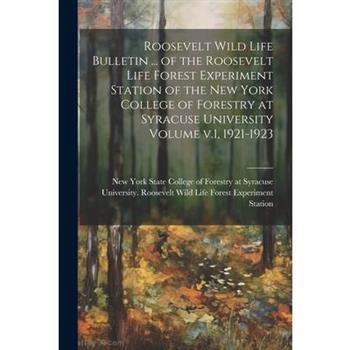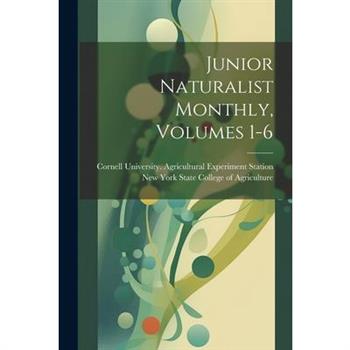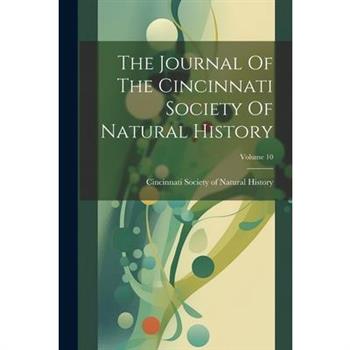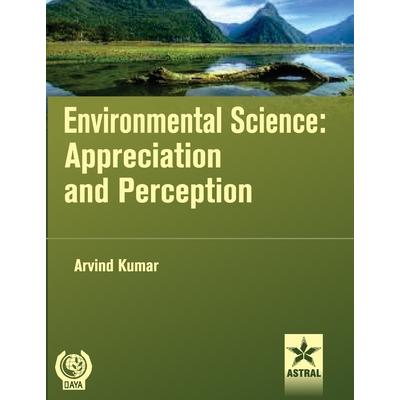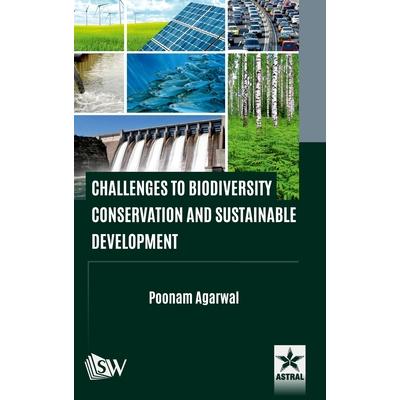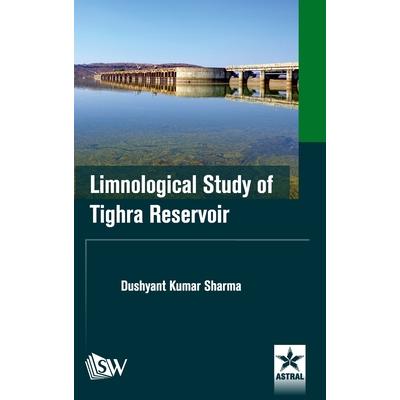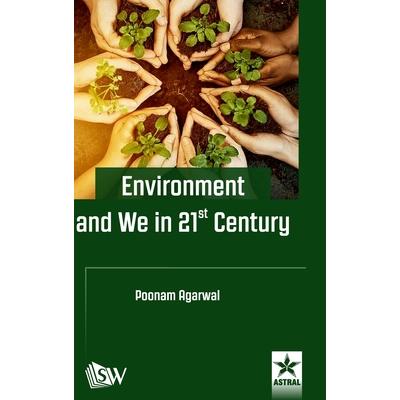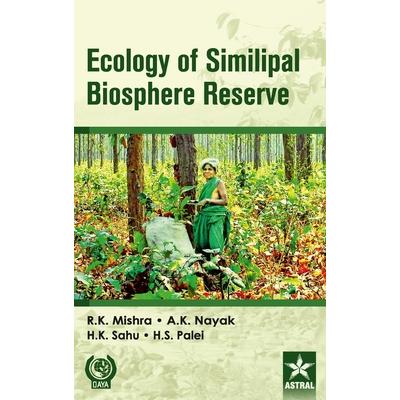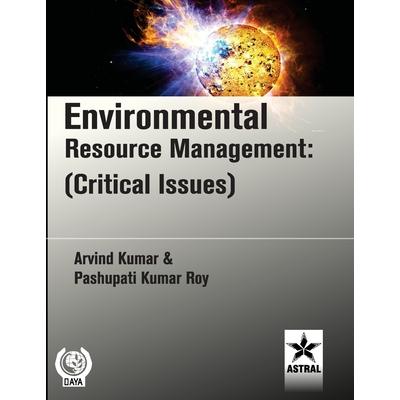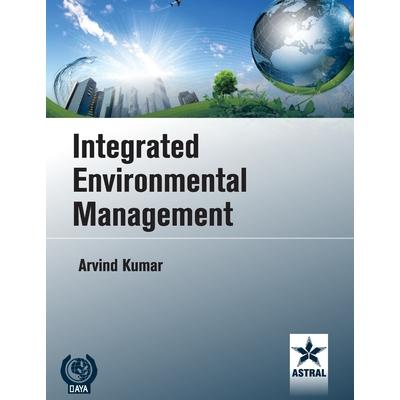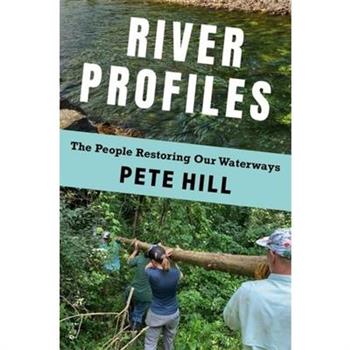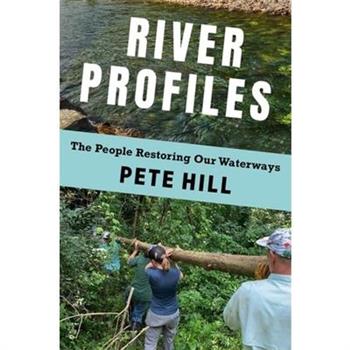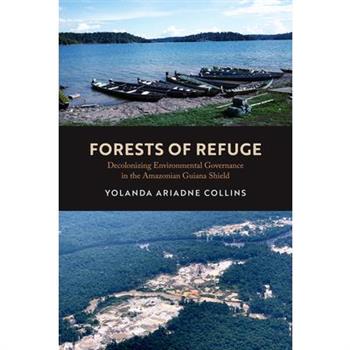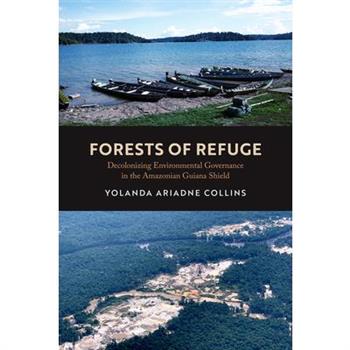Manufactured Uncertainty
In this provocative work, Lorraine Code returns to the idea of "epistemic responsibility," as developed in her influential 1987 book of the same name, to confront the telling new challenges we now face to know the world with some sense of responsibility to other "knowers" and to the sustaining, nonhuman world. Manufactured Uncertainty focuses centrally on the environmental and cultural crises arising from postindustrial, man-made climate change, which have spawned new forms of passionately partisan social media that directly challenge all efforts to know with a sense of collective responsibility. How can we agree to act together, Code asks, even in the face of inevitable uncertainty, given the truly life-threatening stakes of today's social and political challenges? How can we engage responsibly with those who take every argument for an environmentally grounded epistemology as an unacceptable challenge to their assumed freedoms, comforts, and "rights?" Through searching critical dialogue with leading epistemologists, cultural theorists, and feminist scholars, this book poses a timely challenge to all thoughtful knowers who seek to articulate an expanded and deepened sense of epistemic responsibility--to a human society and a natural world embraced, together, in the most inclusive spirit.
Wetlands - New Perspectives
Wetlands are some of the most important ecosystems on our planet, providing a range of essential services from biodiversity conservation to water purification. Wetlands - New Perspectives is a comprehensive collection of seven chapters that presents the latest research and insights on wetlands from various perspectives. This book covers a range of topics, including the impacts of climate change on wetlands, the economic benefits of using wetlands for water retention, and the collaborative management of fire-resilient peatlands. It also provides insights into the prospects for the use of degraded wetlands and the management of prior converted hydric soils to support agriculture production. The authors of this book are experts in their fields and offer new perspectives on the management and conservation of wetlands. The book provides valuable insights and information for researchers, policymakers, and wetland managers who seek to promote the sustainable management of these vital ecosystems. Wetlands - New Perspectives is a must-read for anyone interested in the future of wetlands and the role they play in sustaining life on our planet. It is an essential resource for understanding the challenges and opportunities associated with the management and conservation of wetlands.
Tailings Dam Design / Conception Des Barrages de St矇riles Miniers
Tailings are produced from the processing of mineral ores and are commonly stored within embankment dams. The design of the dams requires application of sound engineering principles and an understanding of the properties of the tailings. This Bulletin provides a framework for classifying different types of tailings, ranging from ultra-fine to coarse, based on their geotechnical properties and provides typical geotechnical parameters for the different tailings types. Technologies for dewatering tailings to reduce the risk of storage continue to be developed and the different technologies, from thickening to filtration, and re-application of old technologies are presented to illustrate the options available and, where appropriate, typical in situ properties. This bulletin is directed towards a wide audience of stakeholders: designers, owners, regulators, communities and various organizations and provides a reference for communicating tailings properties and the benefits and limitations of technologies. All mining operations, and thereby tailings operations, are unique. There is no one-solution-fits-all. Tailings dam designs need to account for site-specific conditions, such as climate, physiography, geochemistry, geomorphology, seismology, mining processes, environment, and community setting, with the application of technologies playing an important role in developing safe, sustainable tailings facilities. Les st矇riles miniers sont produits ? partir du traitement des minerais et sont g矇n矇ralement stock矇s derri癡re des barrages en remblai. La conception des barrages n矇cessite l'application de principes d'ing矇nierie solides et une compr矇hension des propri矇t矇s des r矇sidus. Ce bulletin fournit un cadre pour classer diff矇rents types de r矇sidus, allant de l'ultra-fin au grossier, en fonction de leurs propri矇t矇s g矇otechniques et propose des param癡tres g矇otechniques typiques pour les diff矇rentes sortes de r矇sidus. Les technologies d'ass癡chement des r矇sidus pour r矇duire le risque de stockage continuent ? 礙tre d矇velopp矇es; les diff矇rentes technologies, de l'矇paississement ? la filtration, en passant par l'application des anciennes technologies, sont pr矇sent矇es pour illustrer les options disponibles et, le cas 矇ch矇ant, les propri矇t矇s in situ typiques. Ce bulletin s'adresse ? un large public d'intervenants: concepteurs, propri矇taires, r矇gulateurs, communaut矇s et organisations diverses et fournit une r矇f矇rence pour communiquer les propri矇t矇s des r矇sidus et les avantages et les limites des technologies. Toutes les op矇rations mini癡res et, par cons矇quent, les traitements des r矇sidus, sont uniques. Il n'y a pas de solution unique pour tous. La conception des barrages de r矇sidus doit tenir compte des conditions propres au site, telles que le climat, la physiographie, la g矇ochimie, la g矇omorphologie, la sismologie, les processus miniers, l'environnement et le milieu communautaire, l'application de technologies jouant un r繫le important dans le d矇veloppement de parcs ? r矇sidus s羶rs et durables.
Atlantic Journal and Friend of Knowledge. In Eight Numbers. Containing About 160 Original Articles and Tracts on Natural and Historical Sciences, the Description of About 150 New Plants, and 100 New A
This collection of natural and historical scientific essays and articles covers a wide range of topics and provides valuable insights into the scientific mindset of the early 19th century. The author, Constantine Samuel Rafinesque, was a polymath and scholar who made significant contributions to various scientific fields, such as botany, zoology, linguistics, and anthropology. The book is a fascinating glimpse into the scientific world of the time.This work has been selected by scholars as being culturally important, and is part of the knowledge base of civilization as we know it.This work is in the "public domain in the United States of America, and possibly other nations. Within the United States, you may freely copy and distribute this work, as no entity (individual or corporate) has a copyright on the body of the work.Scholars believe, and we concur, that this work is important enough to be preserved, reproduced, and made generally available to the public. We appreciate your support of the preservation process, and thank you for being an important part of keeping this knowledge alive and relevant.
Workbook of Atmospheric Dispersion Estimeates
An indispensable reference guide for anyone involved in environmental science or engineering, this workbook provides practical tools and techniques for modeling atmospheric dispersion of pollutants. Written by a leading expert in the field, it offers clear explanations and step-by-step guidance for a wide range of scenarios.This work has been selected by scholars as being culturally important, and is part of the knowledge base of civilization as we know it.This work is in the "public domain in the United States of America, and possibly other nations. Within the United States, you may freely copy and distribute this work, as no entity (individual or corporate) has a copyright on the body of the work.Scholars believe, and we concur, that this work is important enough to be preserved, reproduced, and made generally available to the public. We appreciate your support of the preservation process, and thank you for being an important part of keeping this knowledge alive and relevant.
The Natural History of Enewetak Atoll
This comprehensive study of the natural history of Enewetak Atoll in the Marshall Islands is a treasure trove of information on the flora and fauna of this unique ecosystem. With contributions from dozens of experts in various fields, V.2 covers the geology, botany, invertebrates, and fishes of the atoll in detail, as well as providing a glimpse into its cultural history. This volume is an essential resource for ecologists, conservation biologists, and anyone interested in the biodiversity of the Pacific islands.This work has been selected by scholars as being culturally important, and is part of the knowledge base of civilization as we know it.This work is in the "public domain in the United States of America, and possibly other nations. Within the United States, you may freely copy and distribute this work, as no entity (individual or corporate) has a copyright on the body of the work.Scholars believe, and we concur, that this work is important enough to be preserved, reproduced, and made generally available to the public. We appreciate your support of the preservation process, and thank you for being an important part of keeping this knowledge alive and relevant.
Proceedings
This volume is a collection of papers presented at the 1958 Salt Marsh Conference, an important forum for researchers studying coastal wetlands and their ecosystems. Topics include the ecology of salt marshes, the role of marshes in the coastal environment, and the impact of human activities on these areas. With contributions from leading experts in the field, it is a valuable reference for scientists, educators, and policymakers.This work has been selected by scholars as being culturally important, and is part of the knowledge base of civilization as we know it.This work is in the "public domain in the United States of America, and possibly other nations. Within the United States, you may freely copy and distribute this work, as no entity (individual or corporate) has a copyright on the body of the work.Scholars believe, and we concur, that this work is important enough to be preserved, reproduced, and made generally available to the public. We appreciate your support of the preservation process, and thank you for being an important part of keeping this knowledge alive and relevant.
An Index to the Museum Boltenianum
In this comprehensive index, Joachim Friedrich Bolten and William Healey Dall catalog the specimens and objects that comprise the Museum Boltenianum. This museum was founded by Bolten in the late 18th century and contains a vast collection of specimens from around the world. This index is a valuable resource for anyone interested in the natural sciences.This work has been selected by scholars as being culturally important, and is part of the knowledge base of civilization as we know it.This work is in the "public domain in the United States of America, and possibly other nations. Within the United States, you may freely copy and distribute this work, as no entity (individual or corporate) has a copyright on the body of the work.Scholars believe, and we concur, that this work is important enough to be preserved, reproduced, and made generally available to the public. We appreciate your support of the preservation process, and thank you for being an important part of keeping this knowledge alive and relevant.
Soil Science; Volume 13
A comprehensive introduction to soil science, including the properties, formation, and management of soils. With practical applications and real-world examples, this book is ideal for students and professionals working in agriculture, environmental science, or soil remediation.This work has been selected by scholars as being culturally important, and is part of the knowledge base of civilization as we know it.This work is in the "public domain in the United States of America, and possibly other nations. Within the United States, you may freely copy and distribute this work, as no entity (individual or corporate) has a copyright on the body of the work.Scholars believe, and we concur, that this work is important enough to be preserved, reproduced, and made generally available to the public. We appreciate your support of the preservation process, and thank you for being an important part of keeping this knowledge alive and relevant.
The Life History of Lodgepole Burn Forests; Volume no.79
This seminal work on forest ecology and management examines the lodgepole pine forests of the American West and the natural processes that regulate their growth and regeneration. Written by pioneering ecologist Frederic E. N. Clements, this book remains a valuable resource for researchers and professionals interested in understanding the intricacies of forest ecosystems.This work has been selected by scholars as being culturally important, and is part of the knowledge base of civilization as we know it.This work is in the "public domain in the United States of America, and possibly other nations. Within the United States, you may freely copy and distribute this work, as no entity (individual or corporate) has a copyright on the body of the work.Scholars believe, and we concur, that this work is important enough to be preserved, reproduced, and made generally available to the public. We appreciate your support of the preservation process, and thank you for being an important part of keeping this knowledge alive and relevant.
The Nature Of The World And Of Man
This interdisciplinary book takes a holistic approach to exploring the connections between the natural world and humanity. The authors draw on biology, ecology, philosophy, and psychology to explore how humans and nature are intertwined.This work has been selected by scholars as being culturally important, and is part of the knowledge base of civilization as we know it.This work is in the "public domain in the United States of America, and possibly other nations. Within the United States, you may freely copy and distribute this work, as no entity (individual or corporate) has a copyright on the body of the work.Scholars believe, and we concur, that this work is important enough to be preserved, reproduced, and made generally available to the public. We appreciate your support of the preservation process, and thank you for being an important part of keeping this knowledge alive and relevant.
Dictionary of Ecology
Whether you're a student, researcher, or just someone interested in the environment, Herbert C. Hanson's dictionary is an invaluable resource. With clear and concise definitions of key terms in ecology, this book is an essential reference for anyone seeking to deepen their understanding of the natural world.This work has been selected by scholars as being culturally important, and is part of the knowledge base of civilization as we know it.This work is in the "public domain in the United States of America, and possibly other nations. Within the United States, you may freely copy and distribute this work, as no entity (individual or corporate) has a copyright on the body of the work.Scholars believe, and we concur, that this work is important enough to be preserved, reproduced, and made generally available to the public. We appreciate your support of the preservation process, and thank you for being an important part of keeping this knowledge alive and relevant.
Not Just Dirt
Just Not Dirt is a book helping soil caretakers to look at ways of managing regeneratively. That is building soil adding carbon back into the soil ecosystem. The soil health principles are global, they are true around the world. How you do it will have a regional flavour and agronomics. Topics extensively covered are the five soil health principles: keep a vegetative plant growing, increase plant diversity, reduce tillage, reduce use of synthetic inputs, and livestock integration, plus the rationale of why these are important. There are seven producer's stories telling of their regenerative agriculture journey from Western Canada and Western Australia.
Londonderry Lithia Spring Water
This book is a promotional brochure for Londonderry Lithia Spring Water, touted as the strongest natural lithia water in the world and an absolute specific for gout, rheumatism, dyspepsia, and other ailments. It offers a fascinating glimpse into the history of health and wellness marketing.This work has been selected by scholars as being culturally important, and is part of the knowledge base of civilization as we know it.This work is in the "public domain in the United States of America, and possibly other nations. Within the United States, you may freely copy and distribute this work, as no entity (individual or corporate) has a copyright on the body of the work.Scholars believe, and we concur, that this work is important enough to be preserved, reproduced, and made generally available to the public. We appreciate your support of the preservation process, and thank you for being an important part of keeping this knowledge alive and relevant.
The Nature Of The World And Of Man
This interdisciplinary book takes a holistic approach to exploring the connections between the natural world and humanity. The authors draw on biology, ecology, philosophy, and psychology to explore how humans and nature are intertwined.This work has been selected by scholars as being culturally important, and is part of the knowledge base of civilization as we know it.This work is in the "public domain in the United States of America, and possibly other nations. Within the United States, you may freely copy and distribute this work, as no entity (individual or corporate) has a copyright on the body of the work.Scholars believe, and we concur, that this work is important enough to be preserved, reproduced, and made generally available to the public. We appreciate your support of the preservation process, and thank you for being an important part of keeping this knowledge alive and relevant.
Plant Ecology
A scientific study of plant ecology, including the interactions between plants, animals, and the surrounding environment. The book covers topics such as plant adaptations, community dynamics, and nutrient cycling, and provides valuable insights into the complex web of life that supports the world's ecosystems.This work has been selected by scholars as being culturally important, and is part of the knowledge base of civilization as we know it.This work is in the "public domain in the United States of America, and possibly other nations. Within the United States, you may freely copy and distribute this work, as no entity (individual or corporate) has a copyright on the body of the work.Scholars believe, and we concur, that this work is important enough to be preserved, reproduced, and made generally available to the public. We appreciate your support of the preservation process, and thank you for being an important part of keeping this knowledge alive and relevant.
The Exploitation of Natural Animal Populations; a Symposium of the British Ecological Society, Durham, 28th-31st March 1960
This collection of essays from the British Ecological Society provides insight into the state of ecological research in the early 1960s. Covering topics from fisheries to forest management, the authors reflect on the ways in which human activity impacts natural animal populations. With contributions from some of the leading minds in ecology at the time, this book is a valuable resource for anyone interested in the history and development of ecological science.This work has been selected by scholars as being culturally important, and is part of the knowledge base of civilization as we know it.This work is in the "public domain in the United States of America, and possibly other nations. Within the United States, you may freely copy and distribute this work, as no entity (individual or corporate) has a copyright on the body of the work.Scholars believe, and we concur, that this work is important enough to be preserved, reproduced, and made generally available to the public. We appreciate your support of the preservation process, and thank you for being an important part of keeping this knowledge alive and relevant.
Animal Ecology
An in-depth exploration of the relationships between animals and their environment, written by renowned ecologist Charles S. Elton.This work has been selected by scholars as being culturally important, and is part of the knowledge base of civilization as we know it.This work is in the "public domain in the United States of America, and possibly other nations. Within the United States, you may freely copy and distribute this work, as no entity (individual or corporate) has a copyright on the body of the work.Scholars believe, and we concur, that this work is important enough to be preserved, reproduced, and made generally available to the public. We appreciate your support of the preservation process, and thank you for being an important part of keeping this knowledge alive and relevant.
Not Just Dirt
Just Not Dirt is a book helping soil caretakers to look at ways of managing regeneratively. That is building soil adding carbon back into the soil ecosystem. The soil health principles are global, they are true around the world. How you do it will have a regional flavour and agronomics. Topics extensively covered are the five soil health principles: keep a vegetative plant growing, increase plant diversity, reduce tillage, reduce use of synthetic inputs, and livestock integration, plus the rationale of why these are important. There are seven producer's stories telling of their regenerative agriculture journey from Western Canada and Western Australia.
The Exploitation of Natural Animal Populations; a Symposium of the British Ecological Society, Durham, 28th-31st March 1960
This collection of essays from the British Ecological Society provides insight into the state of ecological research in the early 1960s. Covering topics from fisheries to forest management, the authors reflect on the ways in which human activity impacts natural animal populations. With contributions from some of the leading minds in ecology at the time, this book is a valuable resource for anyone interested in the history and development of ecological science.This work has been selected by scholars as being culturally important, and is part of the knowledge base of civilization as we know it.This work is in the "public domain in the United States of America, and possibly other nations. Within the United States, you may freely copy and distribute this work, as no entity (individual or corporate) has a copyright on the body of the work.Scholars believe, and we concur, that this work is important enough to be preserved, reproduced, and made generally available to the public. We appreciate your support of the preservation process, and thank you for being an important part of keeping this knowledge alive and relevant.
Animal Ecology
An in-depth exploration of the relationships between animals and their environment, written by renowned ecologist Charles S. Elton.This work has been selected by scholars as being culturally important, and is part of the knowledge base of civilization as we know it.This work is in the "public domain in the United States of America, and possibly other nations. Within the United States, you may freely copy and distribute this work, as no entity (individual or corporate) has a copyright on the body of the work.Scholars believe, and we concur, that this work is important enough to be preserved, reproduced, and made generally available to the public. We appreciate your support of the preservation process, and thank you for being an important part of keeping this knowledge alive and relevant.
Mysteries Of Bee-keeping Explained
Discover the secrets of bee-keeping with over three decades of experience from M. Quinby. This book offers valuable directions on using the movable comb and box-hive, as well as the most effective ways to propagate the Italian bee. This is a must-read for anyone interested in bee-keeping or looking to expand their knowledge on the subject.This work has been selected by scholars as being culturally important, and is part of the knowledge base of civilization as we know it.This work is in the "public domain in the United States of America, and possibly other nations. Within the United States, you may freely copy and distribute this work, as no entity (individual or corporate) has a copyright on the body of the work.Scholars believe, and we concur, that this work is important enough to be preserved, reproduced, and made generally available to the public. We appreciate your support of the preservation process, and thank you for being an important part of keeping this knowledge alive and relevant.
Plant Ecology
A scientific study of plant ecology, including the interactions between plants, animals, and the surrounding environment. The book covers topics such as plant adaptations, community dynamics, and nutrient cycling, and provides valuable insights into the complex web of life that supports the world's ecosystems.This work has been selected by scholars as being culturally important, and is part of the knowledge base of civilization as we know it.This work is in the "public domain in the United States of America, and possibly other nations. Within the United States, you may freely copy and distribute this work, as no entity (individual or corporate) has a copyright on the body of the work.Scholars believe, and we concur, that this work is important enough to be preserved, reproduced, and made generally available to the public. We appreciate your support of the preservation process, and thank you for being an important part of keeping this knowledge alive and relevant.
Roosevelt Wild Life Bulletin ... of the Roosevelt Life Forest Experiment Station of the New York College of Forestry at Syracuse University Volume v.1, 1921-1923
This collection of reports and articles from the Roosevelt Life Forest Experiment Station in upstate New York offers a fascinating look at the flora and fauna of the region, as well as the cutting-edge research being done by scientists at the time. Topics covered include wildlife management, forest ecology, and conservation.This work has been selected by scholars as being culturally important, and is part of the knowledge base of civilization as we know it.This work is in the "public domain in the United States of America, and possibly other nations. Within the United States, you may freely copy and distribute this work, as no entity (individual or corporate) has a copyright on the body of the work.Scholars believe, and we concur, that this work is important enough to be preserved, reproduced, and made generally available to the public. We appreciate your support of the preservation process, and thank you for being an important part of keeping this knowledge alive and relevant.
Junior Naturalist Monthly, Volumes 1-6
These six volumes of Junior Naturalist Monthly offer valuable insights and information on the natural world. With articles on plants, animals, weather, and geology, as well as practical advice for budding naturalists and scientists, these volumes are an essential resource for anyone interested in the natural world around us.This work has been selected by scholars as being culturally important, and is part of the knowledge base of civilization as we know it.This work is in the "public domain in the United States of America, and possibly other nations. Within the United States, you may freely copy and distribute this work, as no entity (individual or corporate) has a copyright on the body of the work.Scholars believe, and we concur, that this work is important enough to be preserved, reproduced, and made generally available to the public. We appreciate your support of the preservation process, and thank you for being an important part of keeping this knowledge alive and relevant.
The Journal Of The Cincinnati Society Of Natural History; Volume 10
This publication is a collection of articles on natural history written by members of the Cincinnati Society of Natural History. It covers various topics, including zoology, botany, and geology, and provides valuable insights into the scientific research conducted in the Cincinnati region during the 19th century.This work has been selected by scholars as being culturally important, and is part of the knowledge base of civilization as we know it.This work is in the "public domain in the United States of America, and possibly other nations. Within the United States, you may freely copy and distribute this work, as no entity (individual or corporate) has a copyright on the body of the work.Scholars believe, and we concur, that this work is important enough to be preserved, reproduced, and made generally available to the public. We appreciate your support of the preservation process, and thank you for being an important part of keeping this knowledge alive and relevant.
Plant toxicity by heavy metals
This work examines the toxicity of heavy metals on medicinal and health plants. The results demonstrate the sensitivity of these plants to metals such as lead, cadmium, mercury, copper and chromium, which can lead to excessive accumulation and compromise their therapeutic quality. Preventative measures and early detection of soil and water contamination are essential to ensure their safety. In addition, it is crucial to develop detoxification strategies and promote herbal medicine to treat these contaminated plants. Strict regulations limiting heavy metal emissions and regular monitoring are necessary to maintain the quality of medicinal plants. In conclusion, a proactive approach is essential to ensure their therapeutic effectiveness and preserve their sustainability.
Toxic Lake
2024 Outstanding Academic Title, given by Choice ReviewsThe environmental history of "the most polluted lake in America."​​Native Americans have long regarded Onondaga Lake as one of the most sacred spaces in the continent, the place where peace between nations was achieved and the Haudenosaunee Confederacy was created. In the mid-twentieth century, however, it acquired a wholly different reputation as "the most polluted lake in America." Toxic Lake is an environmental history of this complex ecological system, tracking how it was tarnished, the costly efforts to clean it up, and the controversies those efforts generated. Thomas Shevory argues that the history of Onondaga Lake mirrors the larger environmental history of the US, from colonization to the industrial era, resulting, eventually, in the rise of social movements and legislative action for environmental protection. Layered within this history is the dismissal of indigenous land claims and the marginalization of indigenous voices in clean-up efforts. Toxic Lake illustrates that the failure to prevent the environmental destruction of Onondaga Lake was part of a political climate which favored unregulated industrial production and urban growth, ignoring the destructive impacts on local environments. Shevory argues this larger failure was the result of an active process of privileging the economic interests of polluters over other business interests, expanding neighborhoods, and indigenous rights. He concludes with an investigation of New York's recent declaration that the clean-up is complete, questioning what exactly that means and whether the lake's status as a sacred space will ever be re-established. Toxic Lake is a compelling work of history, demonstrating the disastrous effects of pollution and the importance of community involvement in environmental activism.
Mitigating the Impact of Extreme Natural Events in Developing Countries
The climate change at global level is leading to the alterations in weather and climate extremes. These climate extremes impact severely on both human and ecosystems including economic losses, sectors such as tourism, agriculture, urban settlements and small island states, etc. Scientists predict that the frequency and intensity of these disasters are likely to increase as a result of the effects of climate change. Their susceptibility is principally based on the geographical, geological and socio-economic characteristics. During the last few decades many countries in Asia and Africa encountered unforeseen natural disasters apparently due to both the climate change and deficiencies of the built environment. It seems that in the last five years such calamities have been accelerated such as Monsoon flooding in Bangladesh; Hurricane Irma in USA and Caribbean; floods in different regions of India, mudslide in Colombia and earthquakes in Mexico and Iran. These high-profile mega-disasters are raising global awareness of the need to build the capacity of national governments, civil society organizations and international entities to prevent, respond to and recover from natural disasters. In order to discuss the above issues, the Centre for Science and Technology of the Non-Aligned and Other Developing Countries (NAM S&T Centre) organized an international round table on 'Impacts of Extreme Natural Events: Science and Technology for Mitigation (IRENE)' in Colombo, Sri Lanka during 13-15 December 2017, which brought the scientists, experts and professionals engaged in R&D, policy making and implementation, social activists and other stake holders to a common forum for sharing views and experiences for the development of a road map for reducing the risks in real situations. This book comprises twenty-four papers from the researchers and professionals of 12 countries. The papers in this book have been categorised in four sections, namely, National Experiences, Regional Cooperation and South-South Relations, International Organisations and Networking and Theoretical Frameworks. The book is expected to be of great value to the immense use to all those associated with issues related to mitigation of mega-disasters due to extreme natural events, from researchers to policy makers, non-government organisations and government officials in the developing and other countries.
Environmental Science
The book entitled "Environmental Science: Appreciation and Perception" provides comprehensive guide to the key factors of Environment. There are serval books on the environment which cover just one or other aspect of the Environmental Science. The Purpose of this comprehensive compilation is to analyse and explain the nature, development and possible implications of environmental education as an important Issue. This book is modeled on an architectural design, laying the foundation first and then building the structure with distinct elevation structure. The present book will be useful to the students, research scholars, scientists in the field of Environmental management and ecoplanners, politicians. In short, this book is helpful for every one who is seeking a clear cut understanding of the environment.
Challenges to Biodiversity Conservation and Sustainable Development
Biodiversity provides the basis for life on earth. It encompasses all species of animals, plants, micro- organisms, ecosystem and ecological processes of which they are a part. India has been blessed with a rich heritage of natural resources, mega biodiversity and accumulated knowledge about utilization of natural resources. Advancement in technology and blind race of industrialization and modernization has resulted in unlimited exploitation of natural resources pushing them to the wall. So, the biodiversity has to face so many challenges to sustain themselves. The situation is reaching a crisis stage. Therefore, biodiversity needs its sustainable use. The present book contains 31 chapters covering all related disciplines which includes Biodiversity, Biodiversity Conservation, Forests, Biodiversity Conservation in Ancient Indian Script, Population Growth and Environmental Stress, Urbanization Threat to Biodiversity, Towards Modern/ Smart Cities, Tourism and Biodiversity, Anthropological Threat to Ethno-Medico Botanical Wealth of India, Water in Past and Present Perspective, Future Status of Water, Water Pollution and Biotic Life, Aquaculture- Threat to Biodiversity, Technology and Environment, Energy and Environment, Hazardous Electronic Wastes: Impending Challenge, Electromagnetic Pollution, Climate Change: Human and Plant Diseases, Climate Change: Challenge for Biodiversity, Climate Change and Medicinal Plant Diversity, Climate Change and Agriculture, Threat to Future- The Environmental Crime, Traditional Knowledge in Biodiversity, An Agenda for Change, Women: Key to Environmental Management and Sustainable Development, Biotechnology in Environmental Protection, Disaster Management, Environmental Management, Environmental Ethics- Our Present and Future Obligations, Sustainable Development- New Approaches and De-Extinction. This book will be of enormous interest and value to the students, teachers, scientists and professional as well as ecologists, conservationists and other people interested in biodiversity conservation.
Limnological Study of Tighra Reservoir
Limnology is the study of inland waters - lakes, reservoirs, rivers, streams, wetlands and groundwater. Limnological studies have great significance today. These studies provide us a path to explore freshwater bodies in various aspects. It is the study of the structural and functional interrelationships of organisms of inland waters as their dynamic physical, chemical, and biotic environments affect them. Until and unless we have a proper understanding of a water body, it is impossible to exploit it in an appropriate way. A limnological study of Tighra Reservoir, Gwalior, Madhya Pradesh was carried out. The study included both physico-chemical analysis as well as biological studies of the reservoir. Such studies not only enable us to understand a water body but also help in better utilization of it. This book is an outcome of such a study. The whole study has been presented in the form of seven chapters along with references. The book will be very useful for academicians, researchers and students, working in the fields of limnology and environmental sciences.
Faunal Diversity of Khajjiar Lake District Chamba, Himachal Pradesh
This book presents the details of faunal beauty of the scenic Khajjiar Lake which is a good representative of the unique Himalayan diversity. Khajjiar Lake also known as Mini Switzerland is one of the oldest preserved area of India notified on 01.07.1949. We have given detail morphological, taxonomic and abundance of all 223 species of different faunal groups (123 invertebrates and 100 vertebrates), spread over 193 genera, 79 families and 32 orders present in, on and around the Khajjiar Lake. This fauna includes some of the important threatened species like 3 species of butterflies placed under Wildlife Protection Act (1972) and thirteen species of mammals placed under Indian Wildlife Protection Act 1972 and two critically endangered birds Indian White-backed Vulture and Red-headed Vulture. However nine species of mammals are also listed as threatened in Convention in Trade of Endangered Species (CITES). There is also an effort to deal with the potential threats and possible conservation measures for this beautiful faunal wealth. This book can be used by the students as a base line source for future studies of the fauna of Khajjiar Lake.
Environment and We in 21st Century
Environment is everything that is around us. All living things live in this environment naturally. But, the condition of our environment is depleting regularly. In 21st century, nature/ environment has faced new kind of tragic problems like various types of pollutions, climate change, shrinking natural landscapes, fast vanishing flora and fauna and depleting natural resources, human population explosion and resultant increasing greed, competition, consumerism etc. All these problems have cropped up due to thoughtless exploitation of various natural resources by we people and also due to our egoistic attitude towards nature. These anthropological activities have led the condition to a crisis stage and progress of technology has changed our thinking and life style. Therefore, environment needs its sustainable use and management of natural resources. The various chapters of the book cover all related disciplines of environment and anthropological activities. These chapters include: our environment, population and environment, urbanization stress on environment, consumerism and environmental degradation, society, technology and environment, environment and sustainable tourism, global warming-a byproduct of globalization, climate change and environment, radiation pollution - threat to environment, polythene pollution, toxic tour in homes, foods polluted by chemicals cause havoc, natural resources in 21st century, anthropogenic impact on planet earth, water crisis, rain water management, religious belief and environment protection, women and environmental protection, environmental protection through education, environmental protection and the judiciary, marching towards sustainability, sustainable development- new approach, changing environment: adaptive strategies and technologies. The book will be immense use to the ecologists, conservationists, foresters, NGOs, students, teachers and researchers engaged in environment science.
Ecology of Similipal Biosphere Reserve
Plants and animals inhabited in different forest ecosystems of Similipal are changing continually in their composition and population due to deforestation, fragmentation, forest fire and other human activities. These activities have posed serious threat to the survival and future sustainability of the unique biodiversity of Similipal. Thus conservation of plants and animals of the reserve in their own habitats needs to know how they exploit the resources. In this context ecologists are playing a major role providing scientific inputs in conservation efforts. Therefore, there has been a need to compile and collate the research findings of ecological research and other allied disciplines and link ecological research with biodiversity conservation. The scope of this book has been able to gather ecological information on phytosociology and phenology of various plant groups, litter decomposition and nutrient turn over on the forest floor, distribution of animals and their status, and the threats imposed on them. The said ecological information compiled about the plants and animals of Similipal in this volume will help the researchers, practitioners and forest managers to formulate management action plans for future sustainability of its biodiversity.
Memoir in Water-Speaks the Wah Umkhrah
If a river were to speak, it will have its say: excruciating stories of human love and strife..... the River Umkhrah that runs through Shillong speaks about Shanbor's sorrowful drowning, about village girls who chase city experiences but/and end in tragedy, reflections upon Khasi matrilineal society that supposedly empowers women, about mothers who don't know how to love, mothers who love their children too much, about the dark days of insurgency in 1990's Meghalaya.
Environmental Resource Management
The vast natural resource is the basic need for human survival and conducive to making life comfortable for living being on this watery planet. But ruthless exploitation of this natural resource which cause severe imbalance in the ecosystem has become the great critical environmental issue. A society which eats up all its resources for its development has no future. The critical issue of crisis of normal survival of biota has arisen with man's unscientific exploitation of nature. Now-a-days, nature is not only destroyed but also steadily transformed into degenerated planet. Since the vast environmental resource is depleting fast, there is an urgent need to maintain healthy environment for healthier life. In the wake of environmental imbalances, short as well long term environmental management strategy should be formulated towards maintenance of ecology of planet This book entitled "Environmental Resource Management: Critical Issues" is the unique compilation of certain burning environmental issues with their management policy so that Environment and Development can not be in conflict. The present book will be useful to the students, research scholars, scientists in the field of Environmental management and ecoplanners, politicians. In short, this book is helpful for every one who is dreaming for cheerful environment as well as sustainable development.
Integrated Environmental Management
Organisms live together in a given ecosystem for a long period of time. Then, through time, they show high degree of intrinsic stability and resilience to climate and other environmental factors in the given ecosystems; the natural phenomena become disturbed resulting in human-organism conflict. To avoid this lethal conflict between environment and human beings, there is a crying need of formulation of certain strategies to manage the environment ecofriendly. In this book, main emphasis has been laid down on reckoning the environmental threats and their possible integrated management. This book is a unique compilation of most recent research articles of eminent environmental scientists which will be helpful for students, research scholars, professors as well as policy makers in achieving the long cherished dream of ecosocialism.
River Profiles
Centuries of mismanagement and destructive development have gravely harmed American waterways, with significant consequences for the ecosystems and communities built around them. But a range of passionate and committed people have stepped up to restore streams and rivers around the United States. A husband-and-wife scientist team in Pennsylvania lead projects to unclog the sediment left by early colonists' dams. Members of the Tulalip Tribes in western Washington State bring beavers back to headwater streams. A public servant in Milwaukee drives the sewer department to remove concrete channels and reduce flood risk. Community activists in Atlanta push for environmental justice in river restoration. Telling these stories and many more, Pete Hill--a twenty-year veteran of the field of watershed restoration--provides a deep dive into the world of river and stream conservation. He profiles the practitioners, scientists, and activists from all walks of life who take part in restoration efforts, exploring their differing, sometimes controversial approaches. Through their stories, Hill illustrates the challenges and rewards of river restoration and the evolving scientific understanding in the field. Underscoring the need for a variety of strategies adapted to different local contexts, he shows that new ideas have come from a wide range of people--from those operating the machinery to those researching stream ecology--and that Indigenous knowledge offers vital resources. At once personal and learned, insightful and inspiring, this book shines a light on the people working to heal our streams and rivers.
River Profiles
Centuries of mismanagement and destructive development have gravely harmed American waterways, with significant consequences for the ecosystems and communities built around them. But a range of passionate and committed people have stepped up to restore streams and rivers around the United States. A husband-and-wife scientist team in Pennsylvania lead projects to unclog the sediment left by early colonists' dams. Members of the Tulalip Tribes in western Washington State bring beavers back to headwater streams. A public servant in Milwaukee drives the sewer department to remove concrete channels and reduce flood risk. Community activists in Atlanta push for environmental justice in river restoration. Telling these stories and many more, Pete Hill--a twenty-year veteran of the field of watershed restoration--provides a deep dive into the world of river and stream conservation. He profiles the practitioners, scientists, and activists from all walks of life who take part in restoration efforts, exploring their differing, sometimes controversial approaches. Through their stories, Hill illustrates the challenges and rewards of river restoration and the evolving scientific understanding in the field. Underscoring the need for a variety of strategies adapted to different local contexts, he shows that new ideas have come from a wide range of people--from those operating the machinery to those researching stream ecology--and that Indigenous knowledge offers vital resources. At once personal and learned, insightful and inspiring, this book shines a light on the people working to heal our streams and rivers.
Imagining Air
Imagining Air tackles air as a cultural, medical, and environmental phenomenon. Its major aim is to explore air's visibility and invisibility within the environment through the investigation of such phenomena as pollution and pandemics. The book provides environmental and medical perspectives on air, in particular how it has historically been envisioned in U.S., Canadian and British cultural and literary narratives. The authors explore how these representations and the constructed meanings of air can help us understand the complex nature of air as it pertains to the COVID-19 pandemic, air pollution and broader environmental degradation. Chapter authors: Siobhan Carroll, Jeff Diamanti, Corey Dzenko, Clare Hickman, Tatiana Konrad, Jayne Lewis, Chantelle Mitchell, Christian Riegel, Arthur Rose, Gordon M. Sayre, Savannah Schaufler.
Lignocellulosic Biotechnology and Related Research
A collection on various topics with implications on new or possible advances with ligno-cellulose research in regards to animal feeding and also lending itself to bioenergy feedstock. It is an informative discussion for the research scientist, and in particular, the specialist in ruminant nutrition covering topics as enzyme technology, applied to crop post-harvest technology, with novel microbial anaerobic lignases, aerobic lignases and other extracellular fibrolytic enzymes (EFEs), boosting water-soluble carbohydrate (WSC) content in new tropical forage-type feeds, action of proteases in plant feed material and digestion, lowering lignin content and use of lacasse for bio-bleaching lignocellulose. Feed resources are discussed in particular for the tropics, including sugarcane and use of bagasse and tops, grasses and legumes, with resources for food and feed farming systems and legume browse trees and shrubs for feed. New probiotics for feed treatment and microbial probiotics using small molecular gene silencing fine biochemicals are featured that would result in better ensilage and ruminal fermentation as a whole. Issues with various pre-treatments and crop improvements and the resulting digestive process with biotechnology are discussed. The author has had a general background in animal nutrition, specifically, with ruminant livestock and which started by coursework and research on the subject of this book at the University of New South Wales, Sydney and was awarded an Overseas Postgraduate Research Scholarship (OPRS) for 3-yrs tenure at the University of New England, Armidale NSW Australia for internal/external study from 1992-1995. The author has in the past published on ensilage, protein digestion and intake, rec-DNA applications to low-quality feeds utilization and the improvement of temperate and tropical ensilage rumen digestion with biotechnology. He currently is a web-based Internet researcher and continues to research and publish, amongst others, in his area of low-quality feeds utilization and animal production and resides in the municipality of Port Coquitlam, Tri-Cities area of British Columbia Canada.
Environmental Management
This comprehensively updated third edition explores the nature and role of environmental management and offers an introduction to this rapidly expanding and changing field. It focuses on challenges and opportunities, and core concepts.
Forests of Refuge
Forests of Refuge questions the effectiveness of market-based policies that govern forests in the interest of mitigating climate change. Yolanda Ariadne Collins interrogates the most ambitious global plan to incentivize people away from deforesting activities: the United Nations-endorsed Reducing Emissions from Deforestation and Forest Degradation (REDD+) initiative. Forests of Refuge explores REDD+ in Guyana and neighboring Suriname, two highly forested countries in the Amazonian Guiana Shield with low deforestation rates. Yet REDD+ implementation there has been fraught with challenges. Adopting a multisited ethnographic approach, Forests of Refuge takes readers into the halls of policymaking, into conservation development organizations, and into forest-dependent communities most affected by environmental policies and exploitative colonial histories. This book situates these challenges in the inattentiveness of global environmental policies to roughly five hundred years of colonial histories that positioned the forests as places of refuge and resistance. It advocates that the fruits of these oppressive histories be reckoned with through processes of decolonization.
Forests of Refuge
Forests of Refuge questions the effectiveness of market-based policies that govern forests in the interest of mitigating climate change. Yolanda Ariadne Collins interrogates the most ambitious global plan to incentivize people away from deforesting activities: the United Nations-endorsed Reducing Emissions from Deforestation and Forest Degradation (REDD+) initiative. Forests of Refuge explores REDD+ in Guyana and neighboring Suriname, two highly forested countries in the Amazonian Guiana Shield with low deforestation rates. Yet REDD+ implementation there has been fraught with challenges. Adopting a multisited ethnographic approach, Forests of Refuge takes readers into the halls of policymaking, into conservation development organizations, and into forest-dependent communities most affected by environmental policies and exploitative colonial histories. This book situates these challenges in the inattentiveness of global environmental policies to roughly five hundred years of colonial histories that positioned the forests as places of refuge and resistance. It advocates that the fruits of these oppressive histories be reckoned with through processes of decolonization.
Agents and Implications of Landscape Pattern
This is an ecology textbook focused on key principles that underpin research and management at the landscape scale. It covers (1) agents of pattern (the physical template, biotic processes, and disturbance regimes); (2) scale and pattern (why scale matters, how to 'scale' with data, and inferences using landscape pattern metrics); and (3) implications of pattern (for metapopulations, communities and biodiversity, and ecosystem processes). The last two chapters address emerging issues: urban landscapes, and adapting to climate change. This book stems from two graduate-level courses in Landscape Ecology taught at the Nicholas School of the Environment at Duke University. The subject has evolved over time, from a concepts-based overview of what landscape ecology is, to a more applied practicum on how one does landscape ecology. As landscape ecology has matured as a discipline, its perspectives on spatial heterogeneity and scale have begun to permeate intoa wide range of other fields including conservation biology, ecosystem management, and ecological restoration. Thus, this textbook will bring students from diverse backgrounds to a common level of understanding and will prepare them with the practical knowledge for a career in conservation and ecosystem management.
Persistent Organic Pollutants in Human Milk
This open access book reviews the trends of persistent organic pollutants (POPs) in human milk and discusses the main findings of five global surveys that were coordinated by the World Health Organization (WHO) and the United Nations Environment Programme (UNEP) from 2000 to 2019. Human milk was selected as core matrix for human exposure under the Global Monitoring Plan for effectiveness evaluation of the Stockholm Convention on Persistent Organic Pollutants. Milk from well-defined groups of mothers was collected and mixed to form a representative sample per country. Datasets collected represent the largest global human tissues survey with a harmonized protocol, carried out in a uniform format for more than two decades. Altogether 69 countries participated in these studies between 2000 and 2015, and more than 40 countries participated in the study from 2016 to 2019.Divided into 5 parts, the book offers an authoritative overview of human milk biomonitoring; collates the harmonized sampling requirements and analytical methods for the identification and quantification of contaminants in human milk; examines the results of the WHO/UNEP-coordinated exposure studies, including the identification of selected chlorinated pesticides, dioxin-like compounds, industrial chemicals like polychlorinated biphenyls (PCB) and chlorinated paraffins, polybrominated POPs and PFAS, among others; and traces geographic, temporal and cross-substance trends and correlations, and human health risks. The book finishes by providing the reader with the summary of the main findings and outlook from these studies, in which the comparison of concentrations found for the wide range of POPs listed in the Stockholm Convention allowed the identification of possible needs for actions and follow-ups in different countries/regions. This book contributes to the understanding of exposure to hazardous chemicals and pollution as addressed by the UN Sustainable Development Goals onGood Health and Well-being (SDG 3) and will appeal to environmental and analytical chemists, researchers, professionals, and policymakers interested in learning more about contaminants in human milk. Given its breadth, this book will also appeal to a broader audience interested in maternal and child health.




